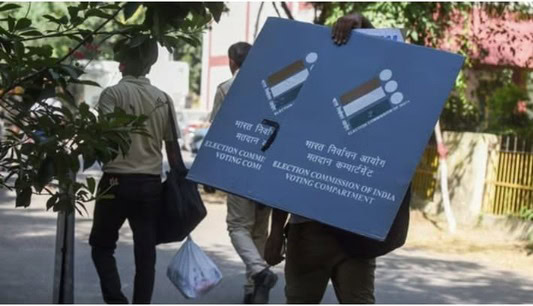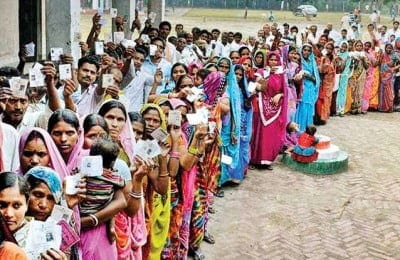Voting is seen almost as a rite of passage, especially for first-time voters, an act that makes one a political being. But how many students actually go to the booth and practice their right to vote?
Voting is seen almost as a rite of passage, an act that makes one a political being. Casting one’s first vote is seen to transform a person from a passive resident to a citizen capable of critically understanding the country and imagining their vision for it. Voting is especially exciting for first-time voters, who are usually university students. University campuses, by their very nature, tend to be political spaces characterised by ideas, activism, and discourses. Each time during elections, political parties make a beeline for spaces dominated by younger people, like colleges, to tap into the ‘young vote bank.’ This especially holds true for India, which has one of the youngest populations in the world, with more than 43% of its population being below 24 years of age. From spirited debates to protests, the youth is at the heart of politics.
This, however, begs the question: how many students actually go to the booth and practice their right to vote? Do students transform their enthusiasm for lively political debates into the act of voting, or does apathy reign supreme? Talking to some students of Delhi University about their participation in the 2024 Lok Sabha elections reveals the shifting patterns of political participation and voting.
To truly understand voting patterns among the country’s youth, we must go back in time and analyse these numbers historically. Statistically speaking, the share of the youth’s vote (18 to 25 years) saw a downward trend from 1996 onwards, when only 54% of people within that demographic voted, with an increase to 68% in 2014, followed by a dip to 67% in 2019. As Vibha Attri and Jyoti Mishra outline in their paper, ‘The Youth Vote in Lok Sabha Elections 2019,’ participation is lowest for young adults, peaks in middle age, and falls among the oldest.
This might be surprising to many, for in the aesthetic of Indian politics, students have always been painted as figures at the forefront—the idealised image of the student, especially one from a university like DU. In the popular imagination, they are seen as active, loud, and politically aware. However, when this image is put to a statistical test, it fails to hold up. The youth in the country are not voting in as big numbers as popularly believed.
The reasons for this apathy are many. Some are logistical, while some are more about the disillusionment that often lurks around the idea of voting.
Stuti Prasad, a third-year student from DU who hails from Bihar, weighs in,
As someone who is from Bihar but living in Delhi for college, I was not able to vote in the 2024 elections due to mandatory attendance requirements, which forced me to stay in Delhi at the time of the elections. I felt it to be quite ironic that I wasn’t able to participate in the elections despite actively following the politics in Bihar.”
Another student from Lady Shri Ram College cast a vote for the first time in the 2024 general elections but faced difficulties due to the polling dates clashing with classes.
The polling date for my constituency was the 26th of April, which was a working college day. I informed all of my professors that I would not be able to attend classes that day as I had to vote, but only one professor agreed to give me attendance provided I showed him the voting mark. A lot of students from my city simply opted not to vote as they would have to miss a lot of attendance.”
Missing out on attendance and logistical issues with voting while living in another city came out to be the top deterrents in casting a vote among students of Delhi University. However, there was also a general disillusionment and indifference to voting among the students as well. Many seem to believe that their vote doesn’t change anything and that taking an off or going to the booth was simply a waste of time.
It didn’t really occur to me if people around me in college were voting or not. There was not a lot of discussion over it, and even if we did discuss it, people only asked each other if they were voting in passing,” reflects a second-year student.
Voting is popularly coming to be seen as a rather personal act that must not warrant a lot of discussions. Many skirt around conversations regarding voting to avoid any sort of confrontation, and talking to students revealed that it is generally considered a social faux pas to prod people’s vote. While this used to be the case for avoiding asking people who they voted for, it seems to have extended to steering away from asking people if they participated in the elections altogether.
While the youth continues to play a pivotal role in electoral politics all over the world, the rates of their political participation are seeing a harrowing decline. Politicians continue to try to woo the younger voters by incorporating internet lingo and dangling promises of employment prospects; however, in the bigger executive stage, the younger population continues to be sidelined. The trend of political disenchantment and passivity among the young voters, especially the first-time voters, is very concerning and needs to be urgently addressed. The idealised image of the hot-blooded, young, active voter must not remain an archetype but must translate into voting numbers.
Read also: Voting in Delhi Elections: Outstation Students’ Edition
Featured Image Credits: Hindustan Times
Disha Bharti


